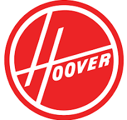To conduct a comprehensive QA process for Zendesk to HubSpot migration via API, you need a detailed strategy that includes both best practices and specific items to check. Below is a structured QA process that addresses both of these aspects.
Pre-QA Checklist:
-
- Ensure clear requirements are documented for the migration, covering all Zendesk entities (tickets, users, organizations, etc.).
- Ensure all fields, custom mappings, and relationships between entities are documented (e.g., ticket to user, user to organization)
- Ensure that all the QA Items are there in the QA sheet, reviewed and turned over from the cosultant
Data Inventory:
- Document the full scope of data to be migrated, including Zendesk entities (tickets, users, organizations, custom fields, notes, emails and attachments).
- Ensure HubSpot is ready to receive this data (custom objects or properties are configured in HubSpot if needed).
Data Structure and Mapping Validation:
-
Field Mapping Verification: Cross-check the mapping of fields between Zendesk and HubSpot. Ensure all fields in Zendesk (standard and custom) are correctly mapped to HubSpot properties.
- Best Practice: Create a mapping document that includes field types (e.g., text, number, dropdown) and validate each mapping.
-
-
- Do's: Verify that data types and formats are compatible (e.g., date formats, dropdown lists).
- Don'ts: Don’t assume field names are the same between platforms. Each field should be mapped intentionally.
-
Mapping document is available in our templates and you can find the QA log tab in the mapping document as well
Custom Field Mapping: Ensure that custom fields in Zendesk are correctly mapped to custom properties in HubSpot
- Do's: Ensure custom objects or properties in HubSpot are created beforehand to receive this data.
- Don'ts: Ignore custom fields, as they might carry critical business information.
Nested Relationships Mapping (Associations): Verify that associations between entities like tickets, users, and organizations are maintained (e.g., Ticket-User, User-Organization).
- Best Practice: Test whether tickets in Zendesk associated with users or organizations are correctly associated in HubSpot after migration.
- Do's: Validate a sample of the nested relationships manually
- Don'ts: Forget to account for one-to-many or many-to-many relationships.
Data Integrity Checks:
-
Data Accuracy: Perform data verification checks for each entity being migrated, including users, tickets, and organizations.
- Best Practice: Conduct side-by-side comparisons of sample records in Zendesk and HubSpot.
- Do's: Test all major entities (tickets, users, organizations, etc.) with sample records to ensure accurate migration.
- Don'ts: Don’t rely on partial data sampling for critical fields; comprehensive checks should be done where possible.
Data Completeness: Check that all records in Zendesk are transferred to HubSpot without missing data.
Date and Time Accuracy: Ensure dates and time (created, updated, resolved) in Zendesk are correctly reflected in HubSpot.
- Best Practice: Convert time zones if necessary and ensure consistent formatting.
- Do's: Verify time zones and formats are aligned.
- Don'ts: Don’t assume both systems handle time zones and daylight savings the same way.
Error Handling Testing: Test how errors are handled during migration (e.g., invalid data, failed API requests).
-
- Do's: Implement logging and retry mechanisms for failed records.
- Log the errors and mark the QA item as failed.
- Reach out to the dev assigned and seek explanation why the error keeps occurring.
- Do's: Implement logging and retry mechanisms for failed records.
-
- Don'ts: Don’t ignore failed migrations; ensure there is a way to identify and correct them.
- Reach out to dev.
- Don'ts: Don’t ignore failed migrations; ensure there is a way to identify and correct them.
Frontend Validation (HubSpot UI):
-
Data Visibility: Verify that migrated data is correctly displayed in HubSpot.
- Check key fields and associations (e.g., tickets displayed under the correct contact or company) in the HubSpot UI
-
UI Consistency: Ensure the data looks clean and usable in HubSpot. Zendesk may allow formats that HubSpot does not, leading to data presentation issues.
- Don’t leave UI issues behind, as they will affect user adoption.
Final Sign-Off:
- User Acceptance Testing (UAT): Involve business users in validating the migrated data in HubSpot to ensure that migration requirements are met.
- Gather feedback from key stakeholders and address issues before sign-off.
- Do's: Run UAT sessions on real data.
- Don'ts: Skip UAT; it’s essential for business validation.
Dos and Don’ts:
Do’s:
- Conduct thorough reconciliation between Zendesk and HubSpot.
- Run small data batches for initial testing and incrementally increase volume.
- Validate all API error logs, rate limits, and retry logic for failed data sync.
Don’ts:
- Do not assume all Zendesk data is clean or formatted correctly for HubSpot. Always sanitize it.
- Don't Assume, Ask. Dev and our dedicated consultants are always there to help.
- Don’t neglect performance testing, especially for large-scale migrations.
